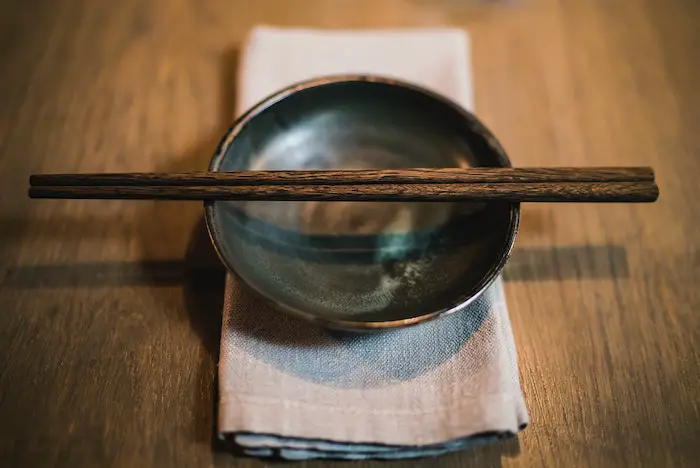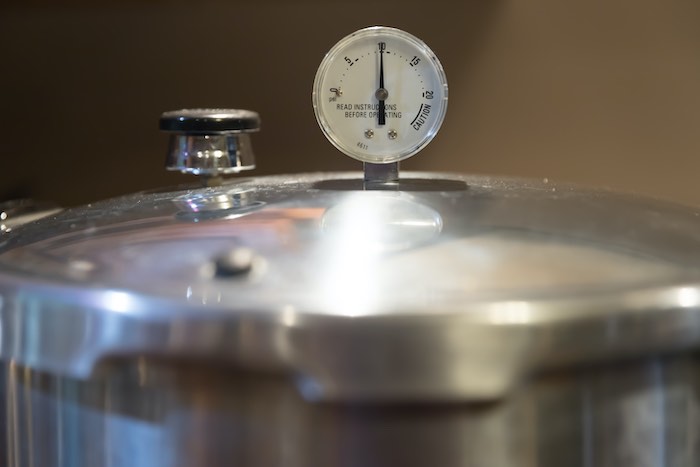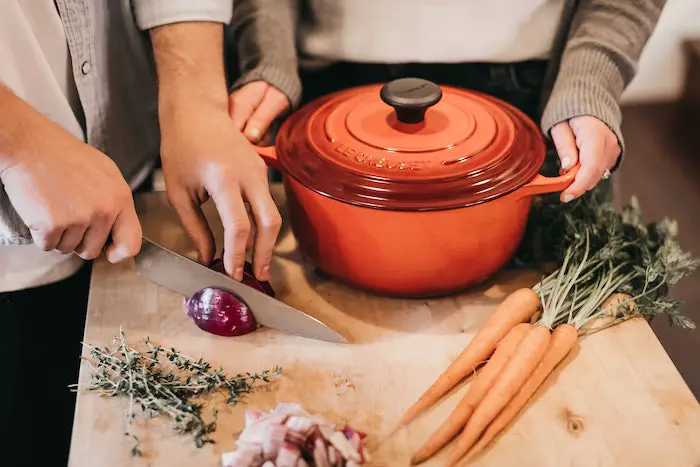Chopsticks are a quintessential aspect of Asian cuisine. For the last 5,000 years, they’re a means for people to cook and eat food. Korea, Japan, China, and Vietnam are all notorious for using them. In light of this, there’s a host of materials they can be made of, including materials such as wood or metal. But what is the difference between these two?
One of the main differences between wood and metal chopsticks is the level of sanitation. Metal tends to be more hygienic than wood, which absorbs bacteria due to its porous nature. However, wood—particularly bamboo—is the most traditional and prevalent material used for most chopsticks.
There are several benefits to using wood as well as metal chopsticks. These include the ease of holding whole pieces of food and maintaining the food’s quality. Therefore, the differences are rather slight and the question of which is better is often more about the personal preferences of the diner themselves.
| Metal | Wood | |
| Area of Origin | Korea | China |
| Specific Materials | Silver, Stainless Steel, or Titanium | Bamboo, Sandalwood, Ebony, Maple, and Japanese Yew |
| Years of Use | Decades | Single-use unless lacquered; several years |
| Ease of Cleaning | Simple soap and water | No cleaning, throw away unless lacquered |
| Potential Dangers | Chipped tooth | Bacteria buildup |
| Annoyances | Heavier than wood, food can be slippery, creates a never-ending tapping noise | Lacquered ones warp over time; unvarnished can add a strange flavor to food |
| Benefits | Hygienic | Anything can be chopsticks |
| Eco-Friendly | Yes | Yes, but unvarnished can be wasteful |
About Wood Chopsticks
The Chinese have used wooden chopsticks made from bamboo since around 1200 BC. However, these were only for cooking; they didn’t begin to use them for actual eating until around 400 AD. From this point onward, the practice and these wooden chopsticks spread to places like Japan, Korea, and Vietnam, followed by the rest of the Asian world.
Types of Wood
Bamboo is the most common material used in every country that utilizes wooden chopsticks. However, other woods can be used for chopsticks too, such as sandalwood, ebony, maple, ironwood, Japanese yew, or another high-quality lumber. These other wooden variations are more popular in Japan where they lacquer them.
Benefits of Wood
Wood is a renewable source, and you can make a pair of chopsticks out of any kind that’s durable and strong. This makes them easy and inexpensive to obtain. Unless they are made from particular types of wood that may be processed to be multi-use or they come in a lacquered form, they’re typically only single-use only and can sometimes add a taste to food that’s undesirable.
Unvarnished Chopsticks
Unfortunately, you will generally have to throw most unvarnished chopsticks away after eating because the bacteria will adhere to the wood. Even with bleach or hydrogen peroxide, they won’t come out 100%. However, wood can be handy in a pinch. For instance, if you’re camping and forgot cutlery, you can take a couple of twigs and use them as chopsticks as a substitute.
Lacquered Chopsticks
Lacquered chopsticks, on the other hand, will last for several years and clean off with soap and water. The length of time they will last a person will depend on the quality of the lacquer. Regardless, they can still warp over time, and this can make them difficult to use.
About Metal Chopsticks
Sometime after the introduction of chopsticks to Korea, they decided to fashion theirs in metal, specifically silver. Today, silver, stainless steel, and titanium are the materials that comprise their chopsticks. The Koreans believe it helps one detect poisonous food as well.
Sanitary & Easy to Clean
These are not only eco-friendly, but they’re also very sanitary and hygienic. You can wash them with soap and water to be immediately ready for reuse. They will last for decades, too. Metal ones don’t leave behind an unusual taste or contribute an unpalatable flavor to the food either.
Downsides to Metal Chopsticks
Unless the metal chopsticks are slightly serrated or have grooves at the ends, holding food can be a slippery experience. Because they are made of metal, they do tend to be heavy and present a challenge when eating. If you aren’t careful, it’s possible to chip a tooth as well, especially with the more pointed styles.
Additionally, metal tends to generate a consistent tapping sound when it hits plates and bowls. When you’re at a restaurant and not used to this, it can be incredibly annoying. That is, of course, unless you’re the musical type, then it might be a strangely intriguing experience of a dining symphony.
Comparing Metal vs. Wood Chopsticks
As you can see, metal and wood chopsticks both have their own benefits and drawbacks. If you’re wondering which one is better to use, the answer is both. This is because what the materials offer is going to rely on what a person prefers, so you should consider testing out both before making up your mind.
Benefits of Both
Both metal and wood provide an eco-friendly way to eat Asian cuisine. Plus, they’re fairly easy to clean. You just use soap and water unless they’re unvarnished. When this is the case, just throw them away.
Materials & Use Over Time
While wood—particularly bamboo—is the more traditional form of chopsticks, metal provides a more sanitary material. Even if you use the lacquered wooden ones, they will still warp over time. Metal won’t do this, and they stay in good condition for decades.
Noise & Flavor
For those bothered by annoying ticking and tapping sounds that never cease, metal chopsticks will likely be very irritating. Wood, on the other hand, is quiet and doesn’t make any noise. However, the metal chopsticks provide a clean and natural taste to the food, yet wooden ones can add a flavor or taste that’s rather undesirable.
Additionally, if you’re in the great outdoors and forget your dining utensils, any two twigs of fairly straight wood can be a great substitute for cutlery in a pinch.
See Also:
4 Best Cooktops With Wi-Fi
Cheese Curds Vs. Mozzarella Sticks: Here Are The Difference
Cast Iron Vs. Regular Pans: What Are The Differences?
What To Do With 90% Cacao Dark Chocolate


